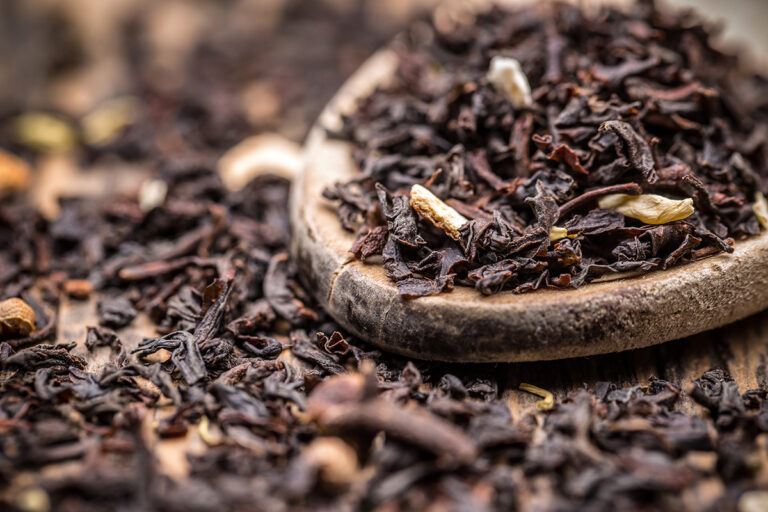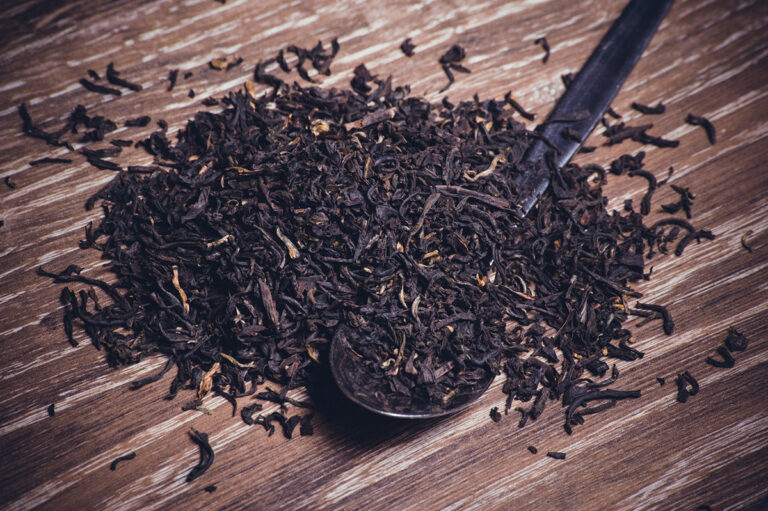Ceylon Tea 101: Benefits, Side Effects, and More
Ceylon tea, often referred to as Sri Lankan tea, is a cherished variant of black tea that is enjoyed both hot and cold by tea enthusiasts across the globe.
Despite its well-known robust character, the flavor of Ceylon tea can differ quite substantially, depending on its variety and the specific region in Sri Lanka where it is cultivated.

What Is Ceylon Tea?
Ceylon tea hails from Sri Lanka, formerly known as Ceylon, a small island nation in the Indian Ocean with a rich history of tea cultivation. This tea is famed for its distinct flavor profiles, varying from robust, full-bodied to light and delicate, influenced by the climate, elevation, and soil conditions where it’s grown. You can find Ceylon tea in black, green, white, and oolong varieties, each offering unique characteristics.
Potential Health Benefits of Ceylon Tea
The most common type of Ceylon tea is black tea, and therefore Ceylon black tea shares all the benefits associated with black tea in general.
High in Antioxidants
Like most teas, Ceylon tea is packed with antioxidants, particularly polyphenols. These bioactive compounds are known to combat free radicals in your body, potentially reducing your risk of chronic diseases, including heart disease and certain types of cancer.
May Aid Weight Loss
Certain studies suggest that tea can help support weight loss and fat burning. The catechins in Ceylon tea might boost your metabolism, aiding in weight management.
Can Boost Heart Health
Ceylon tea contains flavonoids, known to promote heart health. Regular consumption may reduce bad cholesterol levels (LDL), increase good cholesterol (HDL), and lower blood pressure, contributing to overall heart health.
Potential Cognitive Benefits
The moderate caffeine content and antioxidants in Ceylon tea could offer cognitive benefits. Regular consumption might enhance alertness, memory, and overall brain function.
Ceylon Tea Side Effects
While Ceylon tea is generally safe, it’s important to be aware of potential side effects that can arise from excessive consumption.
May Lead to Caffeine Overconsumption
Although Ceylon tea has less caffeine than coffee, excessive consumption can lead to jitteriness, restlessness, and sleep disturbances. It’s crucial to monitor your caffeine intake.
Can Interfere with Iron Absorption
Tannins in Ceylon tea can interfere with the body’s ability to absorb iron from food, potentially leading to iron deficiency. Individuals prone to anemia should exercise caution.
May Cause Allergic Reactions
Some individuals may have a tea allergy, leading to skin rashes, irritation, and other allergic reactions. If you’re experiencing such symptoms, discontinue use and consult a healthcare professional.
How Much Caffeine Is in Ceylon Tea?
Ceylon tea typically contains 50-90 mg of caffeine per 8 oz cup. However, this can vary based on factors like brewing time, water temperature, and the specific type of Ceylon tea used.
What Are the Differences Between Ceylon Tea and Assam Tea?
While both are types of black tea, Ceylon and Assam teas differ greatly. Assam tea, originating from the Assam region in India, is known for its robust, malty flavor. In contrast, Ceylon tea boasts a wide range of flavors from robust to delicate, influenced by the region’s diverse microclimates.
Types of Ceylon Tea
Ceylon tea is not a one-size-fits-all; its flavor and aroma greatly depend on the region where it is grown.
Nuwara Eliya
Nuwara Eliya tea is grown at the highest elevation in Sri Lanka. Known as the “Champagne of Ceylon tea,” it is light and delicate with a fragrant aroma reminiscent of citrus flowers.
Uva
Uva region produces tea with a distinctive flavor influenced by the unique winds in the area. It offers a medium-bodied, smooth cup with a somewhat woody, astringent taste and cool, pungent aroma.
Dimbula (or Dambulla)
Dimbula, nestled in the mountains of Sri Lanka, yields a tea that is aromatic, with a medium to full body and refreshing citrusy notes. Its taste can range from mellow to robust depending on the elevation.
Uda Pussellawa
Tea from Uda Pussellawa, characterized by a cooler and wetter climate, tends to be medium-bodied, with a slightly pink hue and delicate, rosy notes, especially when harvested after monsoon seasons.
Kandy
Coming from one of the oldest tea-growing regions, Kandy’s tea is full-bodied, strong, and dark. Its bold flavor and coppery hue are particularly enjoyed in breakfast blends.
Ruhuna and Sabaragamuwa
Teas from the Ruhuna and Sabaragamuwa regions are grown at lower elevations, resulting in dark, full-bodied teas. Ruhuna teas are bold and intense, with notes of exotic spices. Sabaragamuwa teas are thicker, with a sweet, almost caramel-like flavor.
What Are the Most Common Ceylon Tea Blends?
Ceylon tea is often blended with other tea types to create unique flavors. Popular blends include English Breakfast and Earl Grey, which often feature Ceylon black tea for its robust and full-bodied taste.
How to Make Ceylon Tea
Follow this step-by-step guide to brew the perfect cup of Ceylon tea, bringing out its distinct flavors and aromas:
- Boil fresh, cold water.
- Add 1 teaspoon of Ceylon tea leaves per cup into a teapot.
- Pour the boiling water over the tea leaves.
- Steep for 3-5 minutes for black Ceylon tea, 2-3 minutes for green or white varieties.
- Strain and pour into a cup. Sweeten if desired.
- Enjoy your perfectly brewed Ceylon tea.
Remember, this is a general guide. Follow the manufacturer’s guidelines on the packaging of your branded product for the best results.
Final Thoughts
Ceylon tea is a delightful and healthful beverage, boasting numerous benefits from its rich store of antioxidants.
While there are potential side effects, they are usually associated with excessive consumption. As with any tea, enjoying Ceylon tea in moderation, you can appreciate its unique flavors and health benefits.


